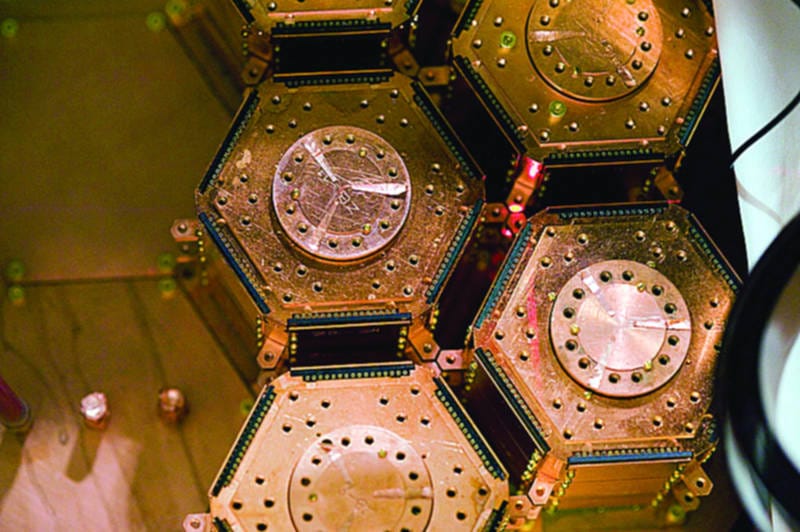A glimpse of dark matter?
Kelly Oakes, a glimpse of dark matter?

In early December last year, the particle physics community was abuzz with rumours of a discovery made by the Cryogenic Dark Matter Search (CDMS-II) collaboration in the US. Announcement talks were scheduled for 18th December, all seminars before that cancelled and there were rumours of a paper submitted by the collaboration to Nature (a rumour, however, that was refuted by a Senior Editor at Nature shortly after it was started). The CDMS had, it was said, found evidence of the existence of dark matter.
It would have been the last major physics breakthrough of the noughties - but sadly, it was not entirely true. The CDMS were announcing their latest results, but those results did not show irrefutable evidence of dark matter’s existence.
Nevertheless, that does not mean that what they have discovered isn’t important. In a paper submitted to arXiv on the same day as their announcement talks were held, the CDMS team reported that they had seen two events characteristic of a particular class of possible dark matter components called weakly interacting massive particles, or WIMPs.
WIMPs are likely to have masses similar to that of atomic nuclei. Despite having never been seen, they are considered one of the main candidates for dark matter, with the appropriately named massive compact halo objects (MACHOs) as their main rival. As WIMPs only interact through the weak nuclear force and gravity, they rarely interact with normal matter, making them very difficult to spot.
The CDMS experiment is located half a mile underground in the disused Soudan mine in Minnesota, and uses germanium and silicon detectors cooled to almost absolute zero. This low temperature means that if a WIMP does pass through these crystals, the heat it generates will cause a charge to move in an applied magnetic field, and this in turn will cause a signal to be sent to a computer in the lab. Once the data has been collected, it is analysed to distinguish the background events from the interesting ones.
What the CDMS found was two interesting events, showing characteristics that would be expected from WIMPs. However, there is still a 23% chance that these events were merely due to background particles such as cosmic rays or radioactive decay. For there to be no reasonable doubt of a discovery, i.e. a less than one in a thousand chance that the events seen were not WIMPs, there would need to have been five events present in the data rather than two. Despite not showing absolute proof, the results will help to set new upper limits that may rule out certain theories currently proposed to explain the dark matter problem.
The CDMS collaboration are now in the process of upping the sensitivity of their experiment by trebling the number of detectors. The upgrade should be finished by summer 2010, then all they can do is sit back and wait patiently for some WIMPs to come along.






